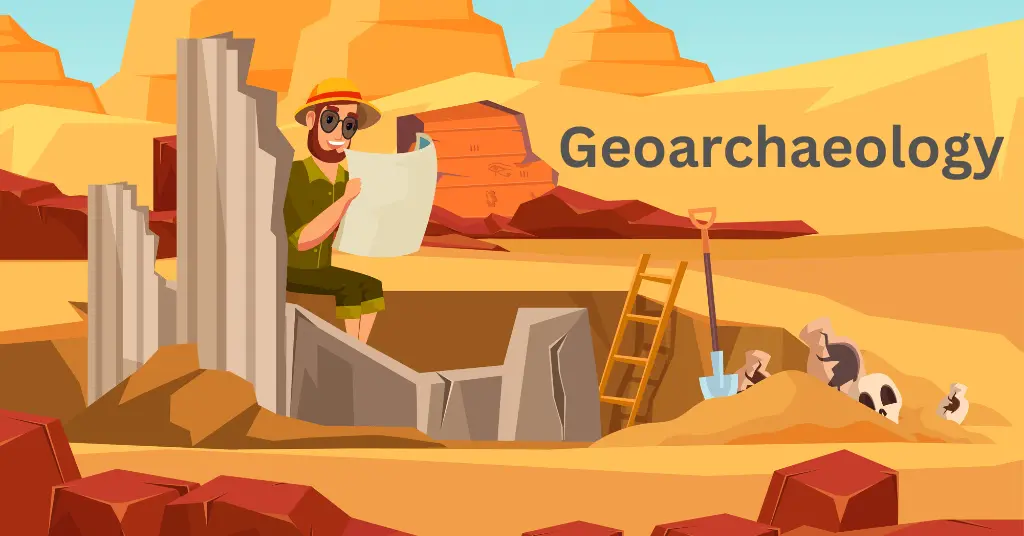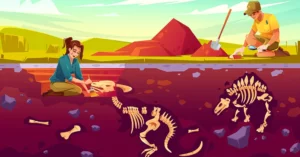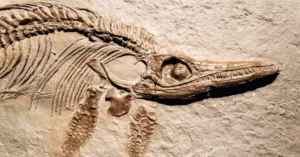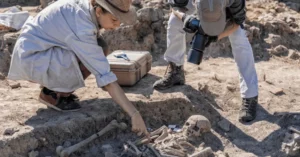AI Answer Evaluation Platform Live Now. Try Free Answer Evaluation Now
Geoarchaeology
In order to confront archaeological issues, the field of research known as geoarchaeology incorporates methods from the Earth sciences. Even when material remains are buried and/or kept in geological contexts, all archaeological investigations are often also geological. Therefore, it is crucial for archaeologists to comprehend how historical geological processes (like erosion and sediment accumulation) influenced the formation of the archaeological record that is visible to us today, in addition to the relationships between archaeological artifacts and the sedimentary contexts from which they were recovered. A range of solutions are available in geoarchaeology for replicating archaic environmental conditions. In order to better understand how ancient people interacted with and adapted to their natural environments over time, these methodologies are crucial for modern archaeological inquiry.

What does a geoarchaeologist do?
To explain the formational history of archaeological sites, geo archaeologists depend on ideas and techniques from the Earth Sciences (geology, geography, geomorphology, geophysics, and geochemistry) (geology, geography, geomorphology, geophysics, and geochemistry) (geology, geography, geomorphology, geophysics, and geochemistry) (geology, geography, geomorphology, geophysics, and geochemistry). Many geological circumstances may affect the preservation and distribution of archaeological artifacts over time, regardless of whether objects were abandoned or placed in the past. Geo Archaeologists can identify these “post-depositional” activities and piece together the history of site growth by looking at the sediments and strata of archaeological sites. Geoarchaeologists also utilize technology to investigate archaeological artifacts in high resolution within a micro-context in order to find minute evidence of past activities (such as the exploitation of fire) that would otherwise be unnoticeable to the human eye. These methods include magnetic susceptibility, Fourier transform infrared spectroscopy, micromorphology, scanning electron microscopy (SEM), micro-X-ray fluorescence (micro-XRF), and SEM (FTIR). In modern archaeological study, the area of microarchaeology, which makes use of this micro contextual approach, is becoming more significant.
Geoarchaeology influence on the cultures of people
The minerals in the soil, the water supply, and the resources offered by the natural flora and fauna are all vital to human civilizations. As our species has progressed, so has the degree and type of this reliance. It is vital to look at whether access to raw resources like food and other necessities has an effect on cultural evolution and how underlying environmental components like climate and geology have an impact on such change. These links interact across a variety of dynamic geographical and temporal dimensions, making it tough to detect and explain them. Our objective is to establish thorough techniques for comprehending the links between the various causes and processes that tie natural resources to cultural development in humans.
Geoarchaeology Methods
Geoarchaeological techniques may be used to investigate the geological context of ancient sites placed all over the world, including those in Australia, Southeast Asia, China, Siberia, Jordan, South Africa, and Europe. With the purpose of establishing an archaeological chronology within the framework of site development processes, these studies are often done in tandem with archaeo chronometric research. In addition to a specific geo microscopy lab for analyzing the micromorphology of archaeological artifacts, CAS also has a MicroTrace lab equipped with Raman spectroscopy and Fourier transform infrared spectrometry (FTIR) for analyzing the geochemistry of archaeological sediments and determining organic residue on artifacts. With tight linkages to CAS and cutting-edge geochemistry procedures including laser ablation, ICP-MS, X-ray fluorescence, and X-ray diffraction, the GeoQuEST Research Centre at UOW is a pioneer in the domain. These abilities are crucial for describing the geochemistry of sediments and historical remnants.
Combining components of Geoarchaeology
Rather than through a scientific examination and modeling of their links, causal linkages between social and cultural evolution, climatic change, and geology have usually been revealed by accident. Using a method that may integrate diverse data sets into the same geographical and chronological framework, it is feasible to comprehensively investigate, for example, how societal growth was functionally tied to resources or influenced by climatic change. We seek to foster a targeted search for information to help academics in the fields of climatology, geology, and archaeology understand the numerous variables that govern cultural evolution and the varied social responses to crises in resource availability.




